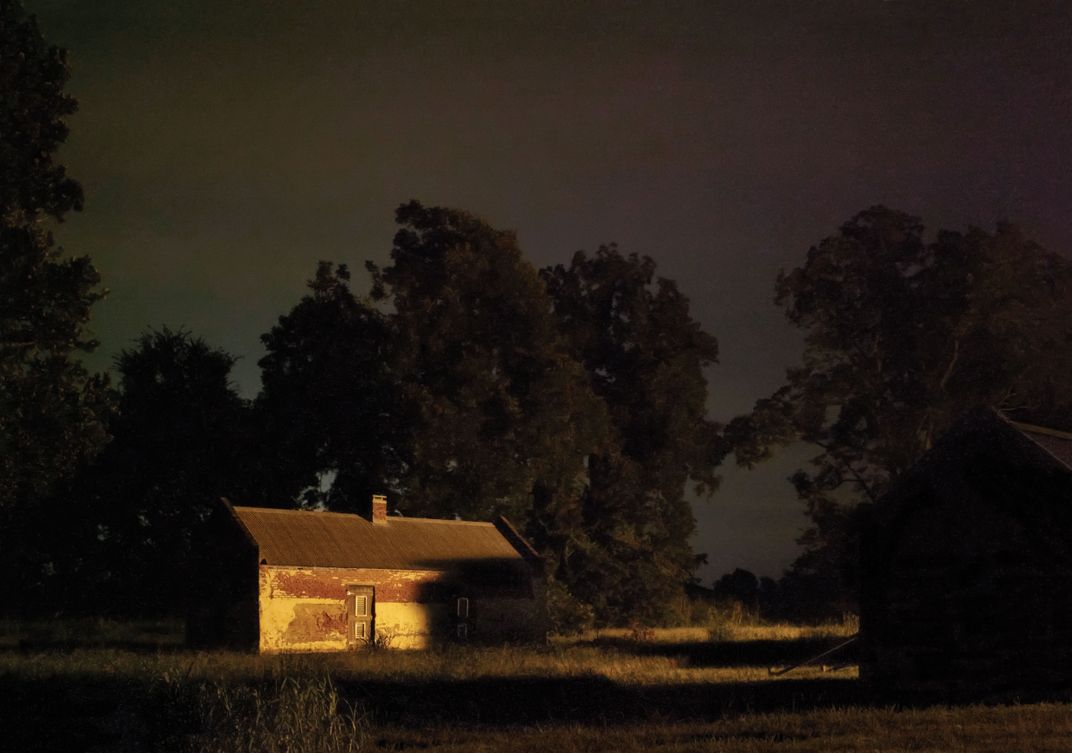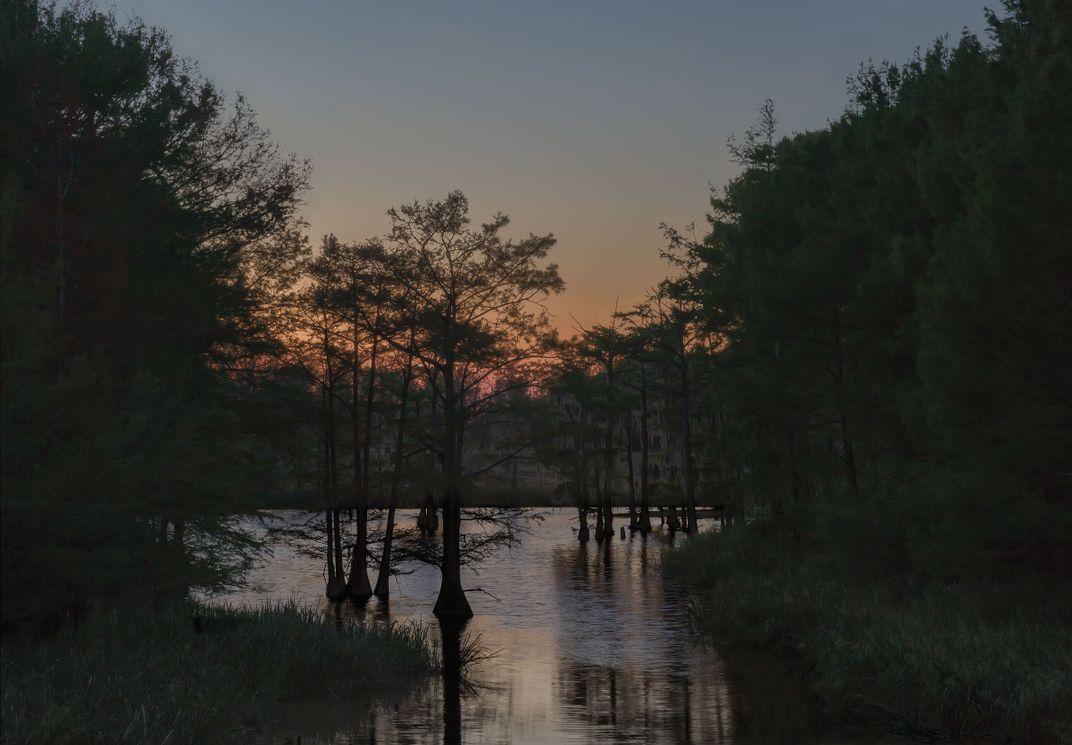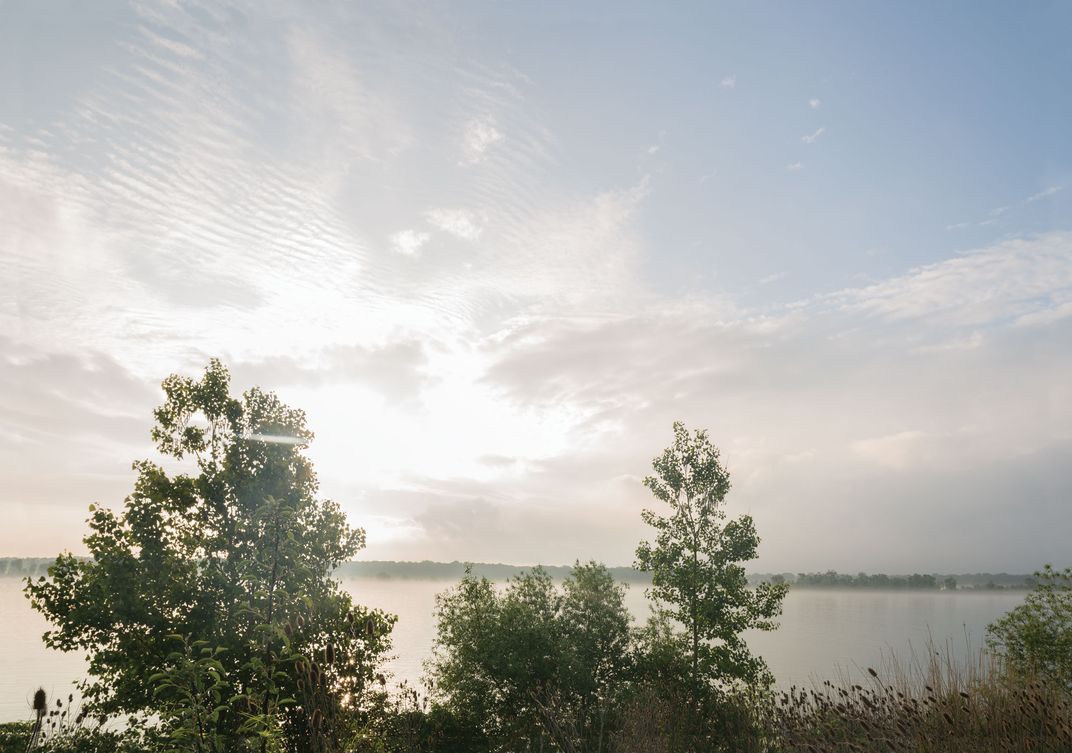Photographer Reconstructs 1,400-Mile Route Along the Underground Railroad
‘Through Darkness to Light: Photographs Along the Underground Railroad’ traces a plausible path a freedom seeker could have taken North
/https://tf-cmsv2-smithsonianmag-media.s3.amazonaws.com/filer/7b/64/7b6488eb-fde4-4bcb-9f06-0906916189be/forweb2.jpg)
Even in the darkness of the Louisiana night, Jeanine Michna-Bales could still make out the eight former slave quarters on the Magnolia Plantation. They stood in rows, first erected by the family of Jean Baptiste LeComte I, who acquired the property in 1753.
A National Parks ranger had escorted the photographer onto the property earlier that night, but he'd since left her alone with her camera.
At its peak in the 1860s, at least 75 people lived at the Magnolia Plantation. Following the Civil War, its slave cabins did not go away. Instead, like so many other plantations, they were recycled into sharecropper cabins. As late as 1970, black laborers still lived in the dwellings.
"You could just feel like you weren't alone," Michna-Bales recalls. "There were other souls with you."
Of the pictures she took that night, one captured a slave quarter dwarfed by the night sky and trees. The shot feels far away, like the person behind the lens might have been taking one last look back.
She titled it “Decision to Leave," and the photograph begins Through Darkness to Light: Photographs Along the Underground Railroad, a photography book published earlier this year that chronicles a roughly three-month, 1,400-mile journey from bondage to freedom.

An estimated 100,000 people escaped on the Underground Railroad, the system of secret routes and safe houses embedded into the landscape in the early- to mid-19th century, forging countless trails to freedom in the process. But reconstructing a plausible route a freedom seeker would have taken North was no easy feat. Today, a vast number of stories from the Underground Railroad remains untold, and visual documentation of it is even more scarce.
“[N]obody really kept records," Michna-Bales says. "The people who did, their lives were at risk for doing so. So, I just tried to make it so that everything was in operation at the same time, so you weren't jumping from an 1840s basin to an 1860s basin.”

The Midwest played an active role in the resistance effort, and, growing up in Indiana, Michna-Bales had long been familiar with the Underground Railroad; some of its stops literally ran through her friends' backyards.
In the early 2000s, she began to wonder what it would look like to translate the road to freedom in a visual way. This was before the National Underground Railroad Freedom Center (a Smithsonian Affiliate) was created or the Freedom Trails Initiatives passed by Congress, she explains, so she dove into research mode, piecing together slave narratives to construct a historically accurate path.
The route she chose starts in Louisiana and ends in Ontario, Canada. While all who embarked on the treacherous journey North risked torture or death if they were found out, escape was especially unlikely from a place in the Deep South like Louisiana. Physically and emotionally closed off from the North, those trapped there couldn't expect to receive any help from Underground Railroad conductors until they’d made the long trek by foot to border states like Maryland, Kentucky and Virginia.
But though the trail she traces was uncommon, people did run away from plantations like Magnolia, they just weren't necessarily headed North or toward Florida or Mexico. Instead, as Michna-Bales learned during her research, some people in the Deep South chose to hide in plain sight, seeking temporary shelter in nearby plantations.
“They would stay gone for a day or a week or a couple of weeks and then, inevitably, for the most part, they would go back,” she says.

Michna-Bales spent more than three years shooting the book. The photographs, heavy with atmosphere, are told through the first-person point of view, a decision she reached because she wanted the photographs to feel as intimate as possible. As she puts it: "I felt people needed to understand what these people needed to go to in order to be free. You're leaving everything behind, and you don't know if you're going to make it. Are you going to be killed? Are you ever going to see your family members again?"
Like she did for the Magnolia Plantation, Michna-Bales scouted each of her locations during the day and returned to photograph them during the dead of night, when it would have been safer for runaways to travel in order to avoid detection.
Only when the location shots veer closer to Canada, to freedom, do the first rays of light enter her frame.

Photographs from Through Darkness to Light are currently on view in a traveling exhibition at the Wyandotte County Historical Museum in Bonner Springs, Kansas, until October 10.